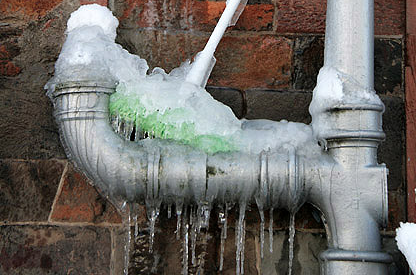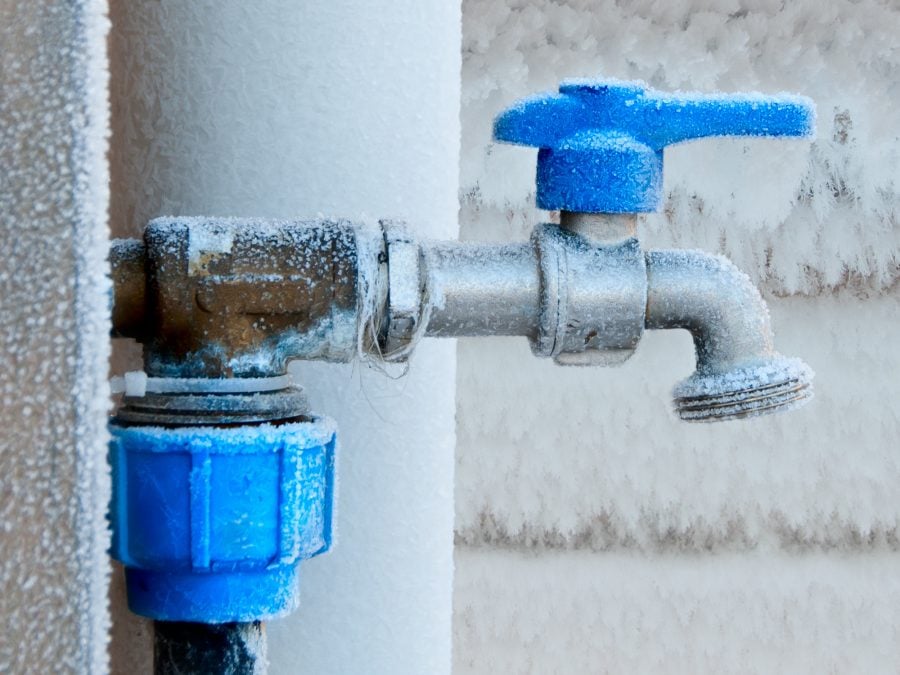Avoid Frozen Plumbing in Cold Weather: Professional Advice
Avoid Frozen Plumbing in Cold Weather: Professional Advice
Blog Article
The article author is making a number of good points about Prevent Frozen Pipes as a whole in the content followed below.

Winter can ruin your plumbing, specifically by freezing pipelines. Right here's just how to stop it from occurring and what to do if it does.
Introduction
As temperature levels drop, the danger of icy pipelines boosts, possibly bring about pricey repairs and water damages. Comprehending how to prevent icy pipes is vital for house owners in cool environments.
Prevention Tips
Protecting prone pipelines
Cover pipelines in insulation sleeves or utilize heat tape to shield them from freezing temperature levels. Concentrate on pipelines in unheated or external areas of the home.
Home heating techniques
Keep indoor spaces properly heated, specifically areas with plumbing. Open cupboard doors to allow cozy air to distribute around pipelines under sinks.
How to identify frozen pipelines
Search for reduced water circulation from taps, unusual smells or sounds from pipelines, and noticeable frost on subjected pipelines.
Long-Term Solutions
Structural modifications
Consider rerouting pipes away from outside wall surfaces or unheated areas. Include added insulation to attic rooms, cellars, and crawl spaces.
Upgrading insulation
Invest in top quality insulation for pipes, attic rooms, and walls. Appropriate insulation assists preserve constant temperatures and reduces the threat of icy pipelines.
Safeguarding Exterior Pipes
Yard hose pipes and outside taps
Detach and drain pipes garden pipes before winter. Install frost-proof faucets or cover outside taps with insulated caps.
Comprehending Icy Pipes
What triggers pipelines to freeze?
Pipelines ice up when revealed to temperature levels below 32 ° F (0 ° C) for extended durations. As water inside the pipelines ices up, it increases, putting pressure on the pipeline wall surfaces and possibly creating them to burst.
Risks and problems
Frozen pipes can cause water supply disturbances, residential or commercial property damages, and pricey fixings. Burst pipes can flood homes and create extensive structural damages.
Indicators of Frozen Pipeline
Recognizing icy pipelines early can stop them from bursting.
What to Do If Your Pipes Freeze
Immediate activities to take
If you suspect frozen pipelines, keep taps available to alleviate stress as the ice thaws. Utilize a hairdryer or towels taken in hot water to thaw pipelines slowly.
Conclusion
Avoiding icy pipes requires aggressive measures and quick feedbacks. By understanding the reasons, signs, and preventive measures, home owners can shield their pipes during cold weather.
5 Ways to Prevent Frozen Pipes
Drain Outdoor Faucets and Disconnect Hoses
First, close the shut-off valve that controls the flow of water in the pipe to your outdoor faucet. Then, head outside to disconnect and drain your hose and open the outdoor faucet to allow the water to completely drain out of the line. Turn off the faucet when done. Finally, head back to the shut-off valve and drain the remaining water inside the pipe into a bucket or container. Additionally, if you have a home irrigation system, you should consider hiring an expert to clear the system of water each year.
Insulate Pipes
One of the best and most cost-effective methods for preventing frozen water pipes is to wrap your pipes with insulation. This is especially important for areas in your home that aren’t exposed to heat, such as an attic. We suggest using foam sleeves, which can typically be found at your local hardware store.
Keep Heat Running at 65
Your pipes are located inside your walls, and the temperature there is much colder than the rest of the house. To prevent your pipes from freezing, The Insurance Information Institute suggests that you keep your home heated to at least 65 degrees, even when traveling. You may want to invest in smart devices that can keep an eye on the temperature in your home while you’re away.
Leave Water Dripping
Moving water — even a small trickle — can prevent ice from forming inside your pipes. When freezing temps are imminent, start a drip of water from all faucets that serve exposed pipes. Leaving a few faucets running will also help relieve pressure inside the pipes and help prevent a rupture if the water inside freezes.
Open Cupboard Doors
Warm your kitchen and bathroom pipes by opening cupboards and vanities. You should also leave your interior doors ajar to help warm air circulate evenly throughout your home.

We had been made aware of that write-up on Winter Plumbing Precautions: Preventing Frozen Pipes from an acquaintance on a different web page. If you enjoyed reading our post if you please remember to share it. Thanks a bunch for your time. Come back soon.
Click Here Report this page